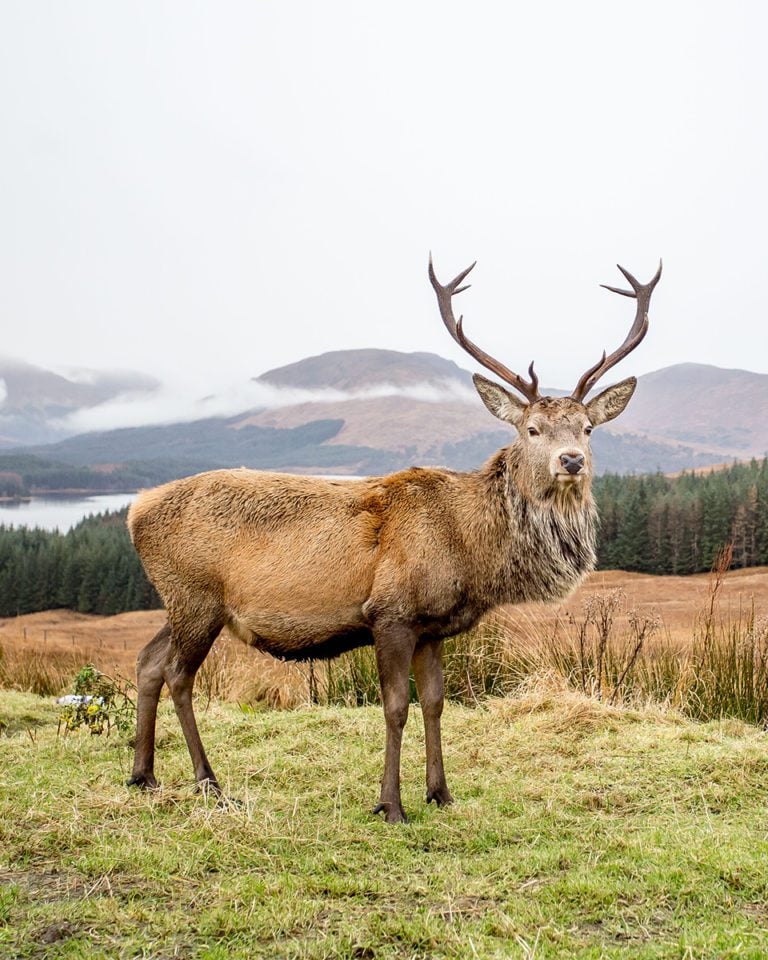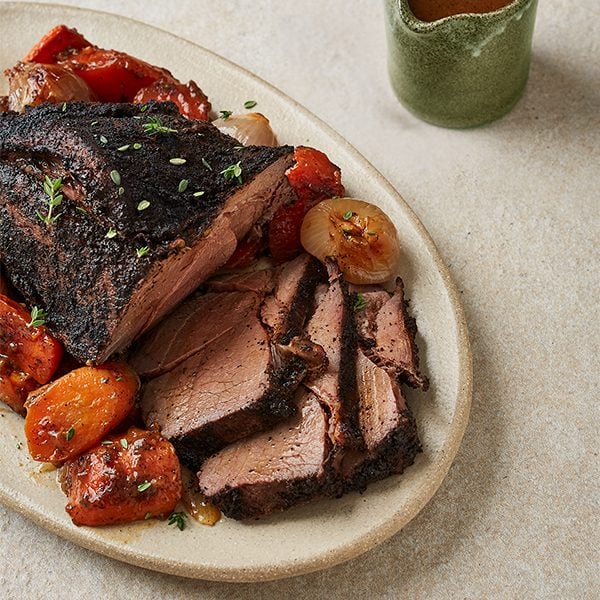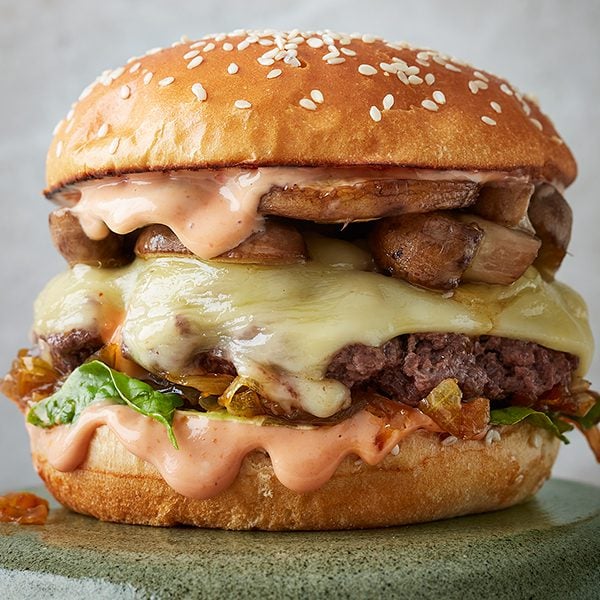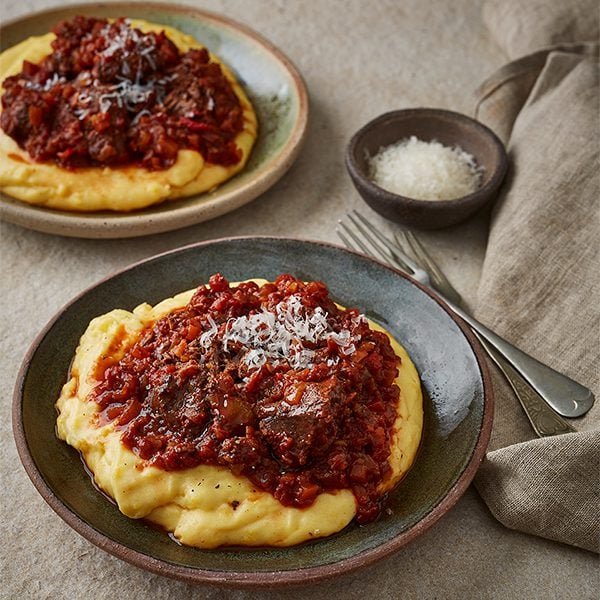Why we should eat more venison
When you think about sustainable meat, venison might not be what first comes to mind. Shrouded in misconceptions and with a reputation for being something for the landed gentry, it’s had a lot of bad press. We call in the experts to bust the myths about this nutrient-loaded meat. Plus, the delicious. food team has some amazing recipes for you to cook with it…
Discover all of our venison recipes.

Why should we eat venison?
“I think of it as basically vegan proof,” says chef, writer and podcaster Tim Maddams. It’s a controversial statement, yet when you stop to listen to the arguments for incorporating venison into your diet, he has a point. Deer are pests. Beautiful pests, but pests nonetheless. In the absence of the natural predators that used to keep herd sizes in check – bears and wolves, which we wiped out years ago in the interests of protecting our own lives – deer populations have increased to the point where they are having a devastating impact on our landscape.
Over the past 50 years, deer numbers have soared from around 450,000 to roughly two million in the UK. “We no longer have such harsh winters, so the only causes of death for deer are old age, illness or cars,” says Ben Heath, one of the biggest managers of deer in southeast England and co-founder of online Wild Meat supplier Deer Box. In fact, deer-related vehicle collisions have increased dramatically as increasing deer populations get ever closer to the roads. “It’s difficult to address urbanisation – but what we can do is reduce deer numbers,” says Maddams.
Forestry England culls 14,000 deer every year, and by eating them we make the best use of the grass and trees we can’t eat, but which deer eat happily. “Grazing animals are an effective way of getting nutritious food from landscapes we can’t farm for crops,” says Patrick Holden, co-founder of the Sustainable Food Trust – and deer are the most effective of all, because they thrive in woods and forests as well as on pasture.
“By eating wild British deer, you aren’t contributing towards climate change by eating grain-fed cows or chicken. You’re helping to consume a pest that will be culled anyway, because it’s damaging,” adds Maddams. “To not eat the meat at that point becomes – well, it’s almost worse than wasteful.”
Deer are a heathier, more ethical and far more sustainable alternative to farmed meat
How can deer be damaging the environment? They’re so cute!
For much the same reason that they’re so nutritious: they feed by browsing trees and grazing on all available vegetation. When well managed, deer populations can exist in harmony with the natural environment, but this balance shifts dramatically when they’re out of control. “If you had a new forestry plantation of 300 deciduous oak trees and you introduced a herd of deer, those new trees would last a matter of weeks,” says Maddams.
A single deer will demolish a bed of lettuce in minutes. This impacts our crops and our reforestation attempts – and it affects other wildlife. “Fallow deer in particular cause damage to hedgerows, which is a key breeding ground for insects and birds,” says Heath. All deer, when in too great a number, “consume vegetation to such an extent that other species – those that would naturally inhabit the area – struggle to exist because there’s nothing for them to eat”.
But I hardly ever see a deer, let alone signs of a deer population problem?
That’s not surprising. Deer are secretive creatures, and for Joe Public, the first sign there are too many of them in the area is, sadly, their carcasses on the road. “Quite often, when we say ‘there’s a deer problem,’ people look at you as if you’re crazy,” says Heath. “There are only certain pockets of the country – East Sussex and Kent – where the deer problem is so great the general public are aware.”
Will any venison I buy be sustainable, then?
Not necessarily. Up until recently, most venison sold by British supermarkets was imported, often from as far away as New Zealand and South Africa. “These countries produce a lot of farmed venison. They’re good at it. But eating it doesn’t save trees. It doesn’t help our deer problem,” says Maddams. Nor does farming venison in the UK – in fact it defeats the object of reducing the wild population. That’s partially because it involves fencing in deer populations, and deer are the ultimate escape artists. Opt first and foremost for wild venison or meat from managed estates – something that’s become easier since last year, when several major retailers committed to ending sales of imported venison.
Buy British venison – either wild or from managed estates
Don’t they shoot deer for ‘sport’, though? I’m not comfortable with that…
It’s a difficult one, Holden acknowledges – “because we’ve abused our position as predators and decimated natural ecosystems.” As Holden sees it, there’s a spectrum of human intervention when it comes to our relationship with – and responsibility for – nature and its bounty. At the one end is wild harvesting and at the other is “crushing of nature through intensive agriculture, which is highly unsustainable. And yet you can’t deny that the wild harvesting, whether it’s foraging, fishing or shooting, can be exhilarating. Those are boundaries we need to explore.”
In the case of deer, several things are worth bearing in mind. First, contrary to what Hollywood might depict, shooting deer is a tightly regulated activity in Britain. “The vast majority of deer being harvested for consumption is done by professional hunters, who are contracted and have permission to manage certain areas. They are paid by carcass to get the deer out,” says Maddams. Holden adds: “Considerable care is taken to ensure the ‘right’ animals are culled – animals that are lame or slightly older, who aren’t pregnant and aren’t best suited for breeding.”
Second, inviting qualified, experienced, careful hunters in to shoot ‘for sport’ is an invaluable source of revenue for deer managers. “If we were relying on selling the meat alone, we would make a loss, so there’s a degree of recreation added to the mix to fund the process,” says Holden.
Last but by no means least, there’s the ‘good death’ argument: the fact shooting is humane, quick and not disruptive to the surrounding environment. “Compared to the abattoir, with the fear and the travel, you could argue that a deer shot in its natural habitat is a ‘good’ death,” says Holden. Sport, management, recreation – whatever you call it, what matters is knowing that “it’s a sacrifice, and we feel that and care about it”.
If wild venison is so abundant, why is it expensive?
It’s not! That misconception exists in part because of the history of deer breeds in the UK. Fallow deer were introduced by the Normans for meat; Sika, Chinese Water deer and Muntjac are ornamental species introduced to the UK at various points throughout history by landowning families. For centuries, venison was restricted to the meat these families sourced from their estates or from the royal forests, which were tightly controlled so the landed gentry could enjoy their hunts; poaching was a punishable offence. The resulting perception is of venison being intrinsically posh.
Venison is only available in autumn and winter, isn’t it?
Again, this is a misconception. “There are six different types of deer in the UK, reproducing across the year,” points out Maddams. “It should be an everyday meat,” agrees Heath. “We’re encouraging people to use venison where they would beef or lamb, in ragùs, pies and so on. From a sustainability and health perspective, the impact of that will be massive.” As well as being rich in omega 3 and 6, venison has more protein and less fat than any other major source of meat.
The sheer number of venison and the different species means it is available – and delicious – all year
What about the flavour? Does venison have a strong gamey taste?
Venison’s flavour has changed dramatically over the years. “Traditionally it was male deer, shot during their rutting period, when the meat is very tangy – arguably at its worst,” says Heath. “Now deer managers are much more aware.” Deer are managed for the quality of their meat, agrees Chris Galvin, co-founder of the Michelin-starred restaurant group known for its venison offering. “Female deer in particular have extra layers of fat, so we order a female venison shoulder for a marinated dish we do with quince and trompette mushrooms.”
The storage of venison post slaughter has also improved. “Everything is now stored at low, consistent temperatures, so the hanging period doesn’t strengthen that gamey flavour in the way that it used to,” says Heath. “When I was younger, I used to hear these stories of game being left to hang until maggots were growing and it was almost rotting, chefs wanted it so high,” Galvin recalls with a shudder. Now it’s hung until the meat is tender in texture, yet still quite mild in taste.
Careful culling and changes in storage mean venison is a much milder meat than it used to be
How venison could help feed the nation
Being affordable, nutritious, flavoursome and versatile, venison has the potential to feed the whole of society. There are strong arguments in favour of replacing factory farmed meat with venison in hospitals, schools and meals for the vulnerable.
In 2021, a collaboration between Forestry England, Highland Game and the East Lancashire Hospital Trust (ELHT) saw locally-sourced wild venison appear on hospital menus – to the delight of patients and staff. Within a year, the Trust’s venison-based pies and casseroles had become one of the most popular menu items.
Meanwhile, Maddams has been working with the Country Food Trust – a charity making game-based meals for people in food poverty across the UK – to provide venison ragù meal pouches. “It’s something I’ve done in my life which I look back on and feel genuinely pleased with,” he says: “creating a nutrient-dense meal for people in desperate need, which is helping the environment and doesn’t support factory farming.”
Where to buy venison
Supermarkets
Most major supermarkets sell a small selection of venison products.
Your local butcher
Just specify British, wild venison.
Online
Venison is easily available through UK-wide online meat suppliers, such as Farmison & Co. You could also look for an online seller from your area. The Wild Meat Company is based in Suffolk. Deer Box sells wild venison from Gloucestershire, Oxfordshire, Berkshire and Hampshire. Macbeth’s sources its venison in the Scottish Highlands.
Delivery box services
Abel & Cole, Field & Flower and Riverford all have options to add venison to your order.
Venison recipe ideas
Check out the latest venison recipes from the delicious. food team…
Coffee-marinated roast venison saddle


Venison and tomato ragù with polenta

Subscribe to our magazine
Food stories, skills and tested recipes, straight to your door... Enjoy 5 issues for just £5 with our special introductory offer.
Subscribe
Unleash your inner chef
Looking for inspiration? Receive the latest recipes with our newsletter